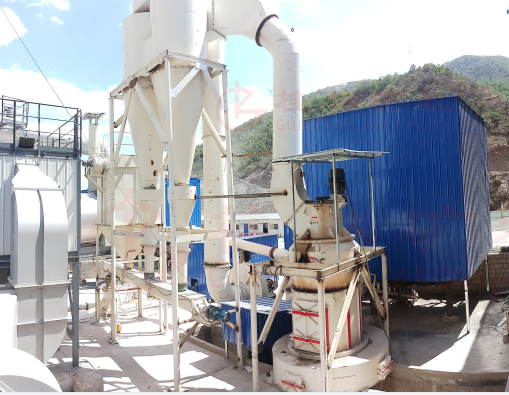Fillers, also known as fillers, are a class of materials that are added to materials (such as plastics, rubber, paper, coatings, etc.) for filling. It can reduce costs, improve performance, and improve process characteristics for materials. There are many kinds of minerals that can be used as mineral fillers, and their uses are also very wide. According to the application fields of fillers, they can be divided into more than 10 kinds of fillers such as plastic fillers, rubber fillers, paper fillers, paint fillers, and paint fillers. Particles are the form in which fillers exist, therefore, natural minerals need to be ground in a pulverizer before they can be used as mineral fillers.

The use of fillers in coatings:
1. It plays the role of skeleton and filling in the paint, increases the thickness of the paint film, and makes the paint film plump and solid.
2. It can adjust the rheological properties of coatings.
3. Improve the mechanical strength of the paint film, such as improving wear resistance and durability.
4. Adjust the optical properties of the coating and change the appearance of the coating, such as extinction.
5. The chemical reaction of the film-forming substance makes it a whole, so that the coating film can effectively block the penetration of light, improve its water resistance and weather resistance, and prolong the service life of the coating film.
6. As a filler in coatings, it can reduce the amount of resin and reduce production costs.
7. Play an auxiliary role in the chemical properties of the coating film, such as enhancing rust resistance, moisture resistance, flame retardancy, etc.
Commonly used mineral fillers in coatings are calcium carbonate (heavy calcium, light calcium), barite powder (barium sulfate), talc, kaolin (porcelain soil), porous powder quartz (silicon dioxide), silica, precipitated barium sulfate , mica powder, wollastonite, bentonite, etc.
Calcium carbonate: Calcium carbonate is an important filler in paint production. Calcium carbonate plays the role of filling and leveling the skeleton and bottom plate (steel plate, wood) in the paint film, and enhances the deposition and permeability of the paint film.
Talc: Talc is a general-purpose filler in solvent-borne coatings. It is currently used in various primers, intermediate coatings, road marking paints, industrial coatings and architectural coatings for interior and exterior use.
Kaolin: Kaolin is one of the fillers widely used in foreign coatings industry. Commonly used kaolins for coatings include ultrafine kaolin, calcined kaolin, activated kaolin (surface modified), etc. Kaolin can be used in various coatings, but mainly water-based architectural coatings.
Graphite: Natural graphite can be used in steel structure maintenance coatings due to its flake structure and good hiding rate. Its good electrical conductivity and black color make it suitable for electronic computer electrical shielding coatings. This coating can contain up to 75 % graphite. Another use is in anti-static floor coatings. It can be used in heat-resistant coatings, primers, sealers, and water-resistant coatings, and due to its good lightfastness, it can be used in automotive paints as an effect pigment.
Wollastonite: The main component of wollastonite is calcium metasilicate (CaSiO3), which has a needle-like structure, good brightness, refractive index (1.62) and relatively low oil absorption (20~26g/100g). Wollastonite with needle-like structure (length-diameter ratio is 10:1~20:1) can act as a flattening agent in coatings, improve the mechanical strength of coatings, and sometimes replace harmful asbestos in reinforced coatings. In coatings, it is generally used for finer-grained (such as 325 mesh) and fine-grained (10um) wollastonite powder, because it is conducive to the exertion of coating hiding power. It can be used in oil-based architectural coatings, sound-absorbing (sound insulation) coatings, road marking paints, polyvinyl acetate latex paints, etc. Surface-treated wollastonite can be used in industrial alkyd, epoxy and other anti-corrosion coatings to improve the corrosion resistance of metal primers and partially replace active anti-rust pigments.












